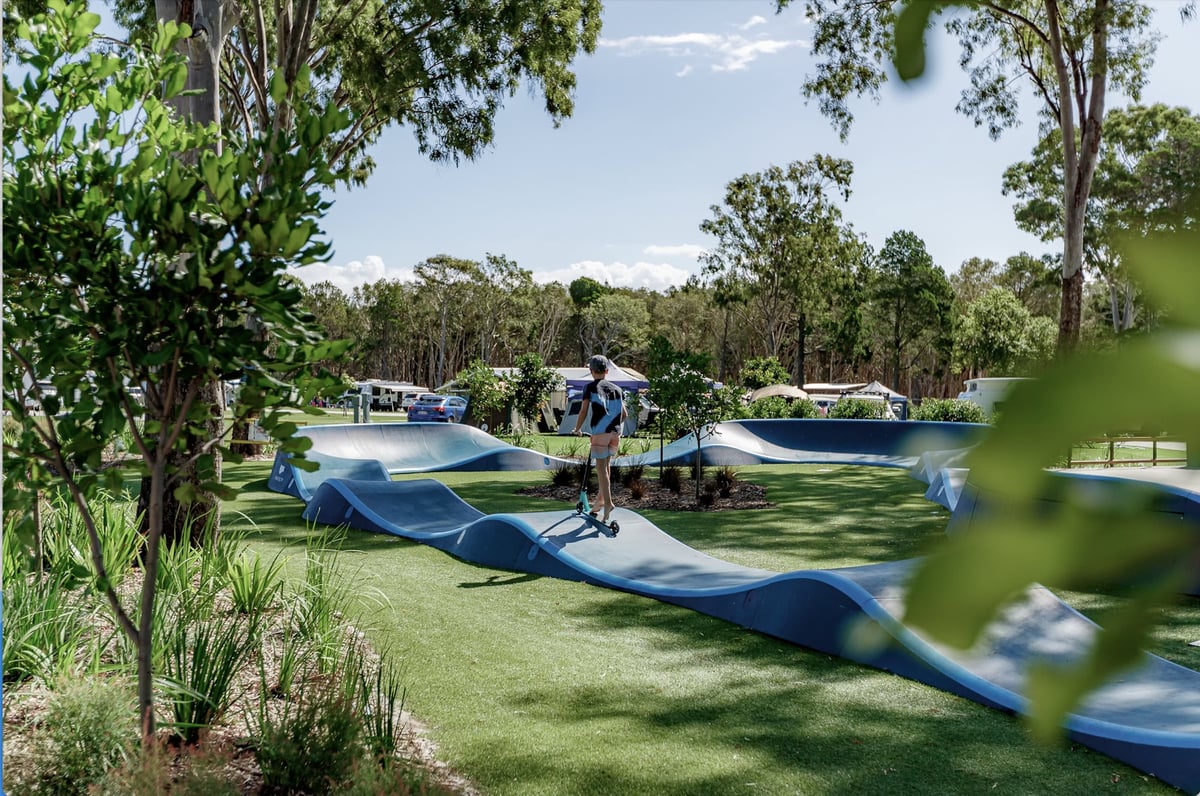
Just like the name says, when you ride a pumptrack, you can pump rather than pedal or push. Bikes, scooters, skateboards, inline skates, and other kinds of wheeled vehicles can all use the physics of pumping to generate speed and momentum on a pumptrack. This blog focuses on how to ride a bike on a pumptrack, but the ideas apply to most types of wheeled movement.
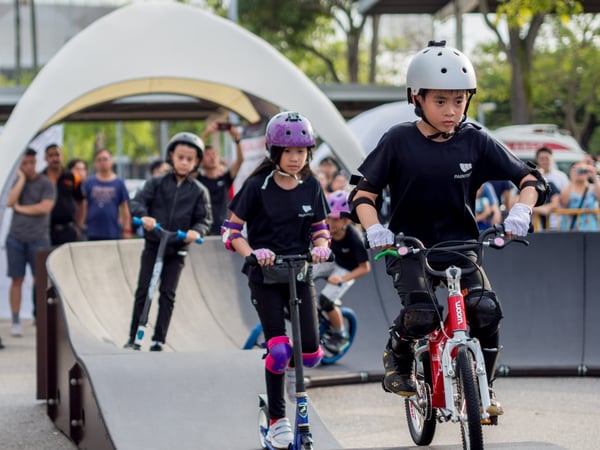
Body Position
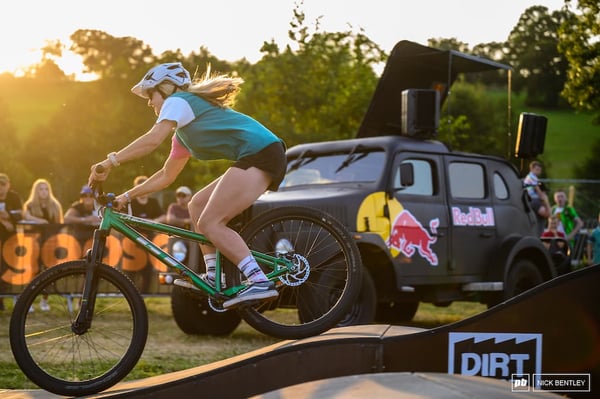
On a pumptrack, your body position on the bike is a lot different than when you’re just cruising down the street. You stand on the pedals with your feet level and your hips, knees, and elbows bent, ready to move with the contours of the track. Sometimes this is called “ready position” or “attack position.”
Your body shifts back and forth, up and down, on the bike as you pump. At some points, your hips will shift way back over the rear wheel, so it helps if you can lower your seat to make that movement easier.
Three Keys for Body Position
- Level pedals.
- Stand on the pedals.
- Bend at the hips, knees, and elbows as needed.
"Kids love them, Amateurs love them, Pros love them. Pump tracks need to be in every town just like kids' playgrounds or soccer fields. Pump tracks get people into sports, get them together, get them to have fun and do something for their health!"
-Claudio Caluori, CEO, Velosolutions
How to Pump Rollers–the Bumps
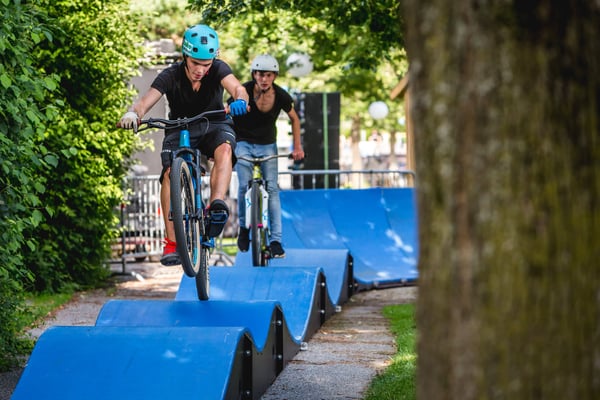
Rollers are the bumps or mini hills on the pumptrack. You want to shift your weight back and down and then forward and up to create momentum as you flow through the rollers. This motion is sometimes called “rowing” and “anti-rowing.”
Start in ready position and as you dip into the roller, push down through your feet, shifting your hips back over your rear wheel and straightening your arms as the handlebars move away from you. (If you’ve never ridden with your hips back over the rear wheel, it feels a bit weird and you may want to practice on flat ground.)
As you come into the uphill, unweight the bike by shifting your hips forward and up until they’re above your pedals. Your chest will come up, your hands will move toward your hips, and your chin will be above the handlebars. As you crest the next roller, push down through your feet and shift your hips back again. Repeat this pumping motion, weighting and unweighting the bike to keep yourself from slowing down on the uphills and to generate speed on the downhills. Before you know it, you’ll feel that magic flow when you’ve got the rhythm!
Three Keys for Pumping Rollers
- Shift your hips back and push the handlebars away from you on the downhill.
- Shift your hips forward and pull your hands toward you on the uphill.
- Repeat this motion through the rollers.
Check out this video on how to pump the rollers from Speed Science Coaching.
How to Ride Berms–the Corners
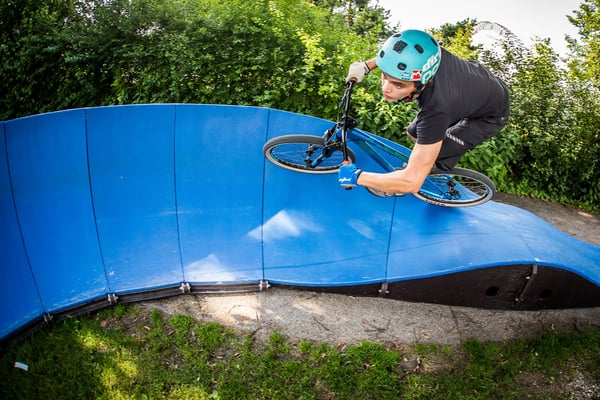
Berms are the high-sided corners of a pumptrack. As a beginner, you can roll along the bottom of a berm, but as your skills advance, you’ll learn to surf the walls. To maintain speed in a berm, enter at about middle height or above. The faster you are going, the higher you want to enter the turn. Push your feet down and shift your hips back to accelerate, just like at the dip of a roller. Look ahead and exit low. The curve will slingshot you right out of the berm.
Three Keys for Riding Berms
- Enter at middle height or higher on the berm.
- Pump as you enter.
- Look ahead and exit low.
Here’s a video from GBMN showing how to ride the berms.
Next Level Skills
You can get even more creative on the pumptrack by adding skills like jumping and manualling to your repertoire.
How to Jump
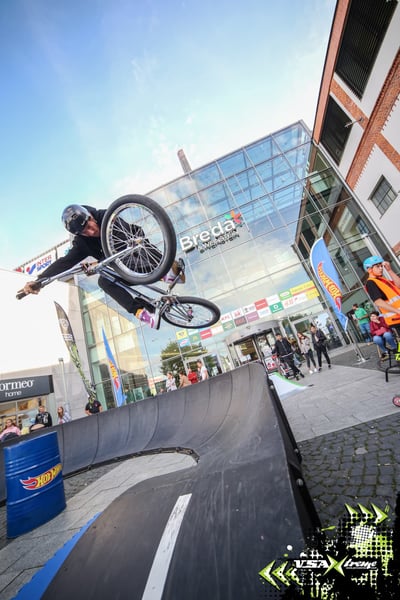
Jumping uses the same motion as pumping a roller. Just allow your bike to float into the air as you hit your takeoff point rather than quickly weighting your body to stick to the track. Some riders like to bend their arms and legs, coiling like a spring, and pop off the takeoff point. They feel like this gives them more height in their jump. You can try both and see what works better for you.
As you take off, you’ll be in a forward position with hips over the pedals. In the air, shift your hips back and arms forward so that you land with your front tire first. Bend your knees and arms to act as suspension, absorbing the force of the landing.
Three Keys for Jumping
- Shift your hips forward for takeoff.
- In the air, shift your hips back to land.
- Bend your arms and legs to absorb the landing.
How to Manual
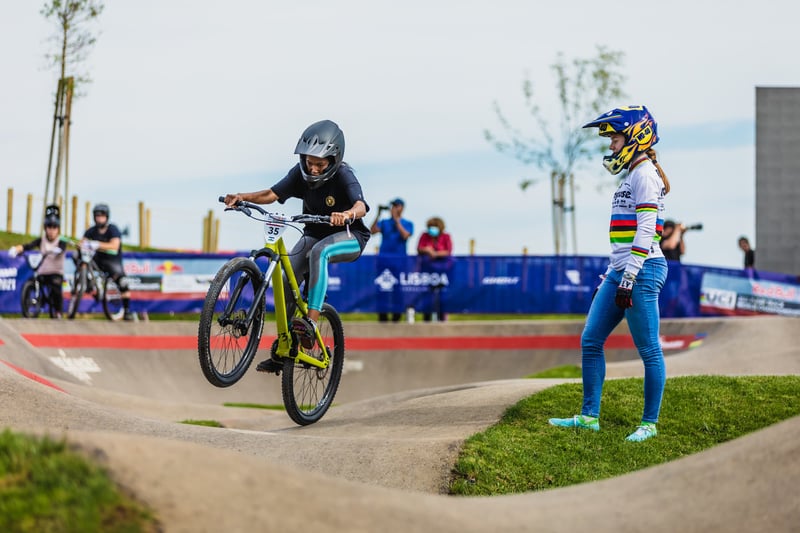
A manual is like a wheelie–you’re riding on your back wheel. But while you pedal a wheelie, you don’t pedal a manual. Manuals are great for the pumptrack because they help you go even faster than basic pumping. And, of course, they look cool, too.
Getting the hang of a manual is all about using your body weight to get that front wheel off the ground. Start by practicing on level ground and roll at a medium speed. From ready position, lean back, and shift your hips down and back behind the rear axle to raise the front wheel. Keep your arms and back straight, and look ahead, not down at your wheel. It will take some practice to find your balance point.
Don’t forget to keep your hand on the rear brake. Touching the rear brake can lower the front wheel if it gets too high, saving you from looping out and crashing on your back. Not fun.
Once you’ve mastered the manual on level ground, try a shallow roller on the pumptrack. You’ll use a pumping action similar to what you used before, but now you’ll unweight your front wheel until it lifts off the ground as you go up the roller. As you crest the roller, push forward with your feet to keep the back wheel touching the ground and the front wheel off the ground. Easy as pie! Right? Er–after some practice.
Here’s a video with Christina Chappetta and Jackson Goldstone showing advanced pumptrack skills, including manuals.
Okay, that’s it. Time to pump! Grab some friends and hit the track. Riders at any level can enjoy it together and dial in their individual abilities. It’s tons of fun, great exercise, and will help you be a better rider no matter where you ride.
Get hyped to ride pumptracks with this clip of Ryan and Zoe road-tripping from Canberra to Adelaide, Australia, hitting as many pumptracks as they can along the way.
Bonus: If you're a skater, this video shows how to pump a skateboard on a pumptrack




